Discover A Small Paris Through 5 Architectural Works of Hanoi
As time progresses, these buildings only become more valuable
Albeit being such a small city, Hanoi’s architecture is a mixture of both domestic and foreign influence. Hanoi contains in it the ancient style of feudal past, modern 21st century to Soviet-inspired monotone blocks, and that of eternally-valuable French design.
Despite being a relatively small city, Hanoi’s architecture reflects a rich tapestry of domestic and foreign influences. The city showcases an interplay of its ancient feudal past, modern 21st-century design, Soviet-inspired utilitarian structures, and timeless French aesthetics.
Throughout its development, a number of buildings in Hanoi have prominently displayed the influence of French architecture. This is evident in the layout, construction materials, and stylistic details. The unique French architectural style, adapted to accommodate local oriental living, has become a hallmark of the millennia-old city of Hanoi.
Among the finest French buildings in the city, the following five are essential stops for anyone visiting Hanoi.
Hanoi Opera House
The Hanoi Opera House, a scaled-down version of the Opéra Garnier in Paris, was inaugurated on September 10, 1911. Constructed in a theater style, it draws inspiration from classical Renaissance architecture prevalent in Europe.
Occupying an area of 2,600 square meters, the building reaches a height of 34 meters above the adjacent street, with the main auditorium measuring 24 by 24 meters. The Opera House is a unique structure, acclaimed for its historical, cultural, architectural, and artistic significance.
Today, it serves as one of the vibrant cultural centers of Hanoi, frequently hosting art performances, concerts, and various cultural events.
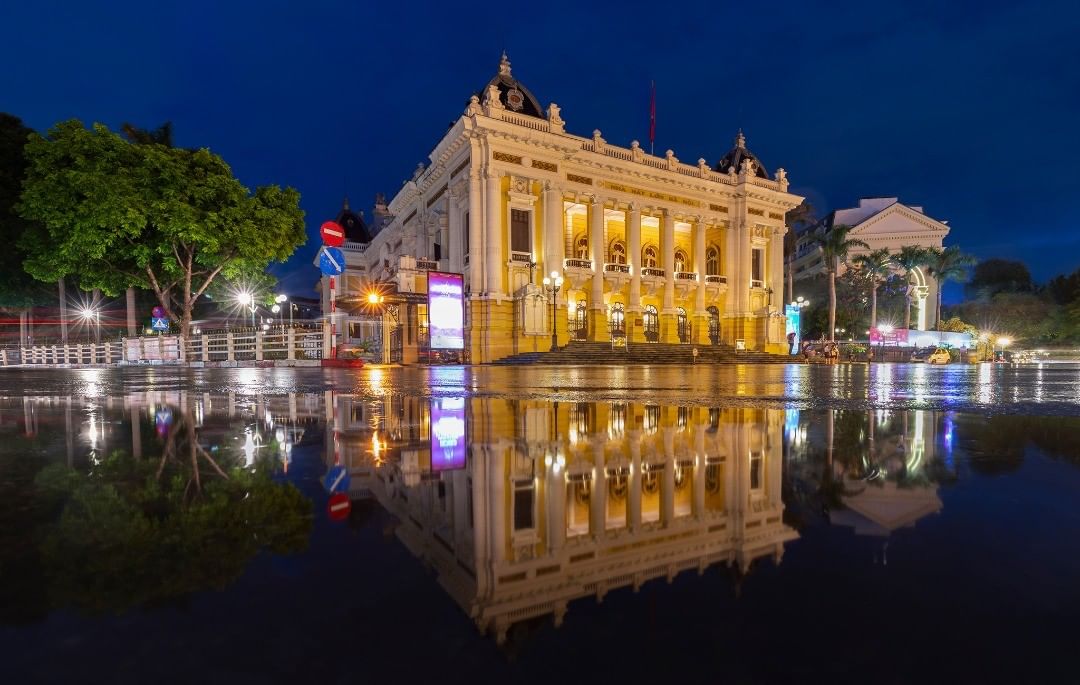 Hanoi Opera House - Photo: @thanhnpvn
Hanoi Opera House - Photo: @thanhnpvn
Hotel Sofitel Metropole Legend Hanoi
Located in the heart of Hanoi, nestled between Hoan Kiem Lake and the magnificent Opera House, the Sofitel Metropole Legend Hanoi was established in 1901 by two French investors. The hotel exudes the charm of the colonial era, characterized by its white-painted façade, green windows, ornate iron details, wooden walls, and lush lawns.
This was the first five-star hotel in Hanoi, frequented by ambassadors and celebrities alike. Notably, Sofitel Metropole is the only hotel in the Indochina region with an exclusive collection of classic Citroën cars.
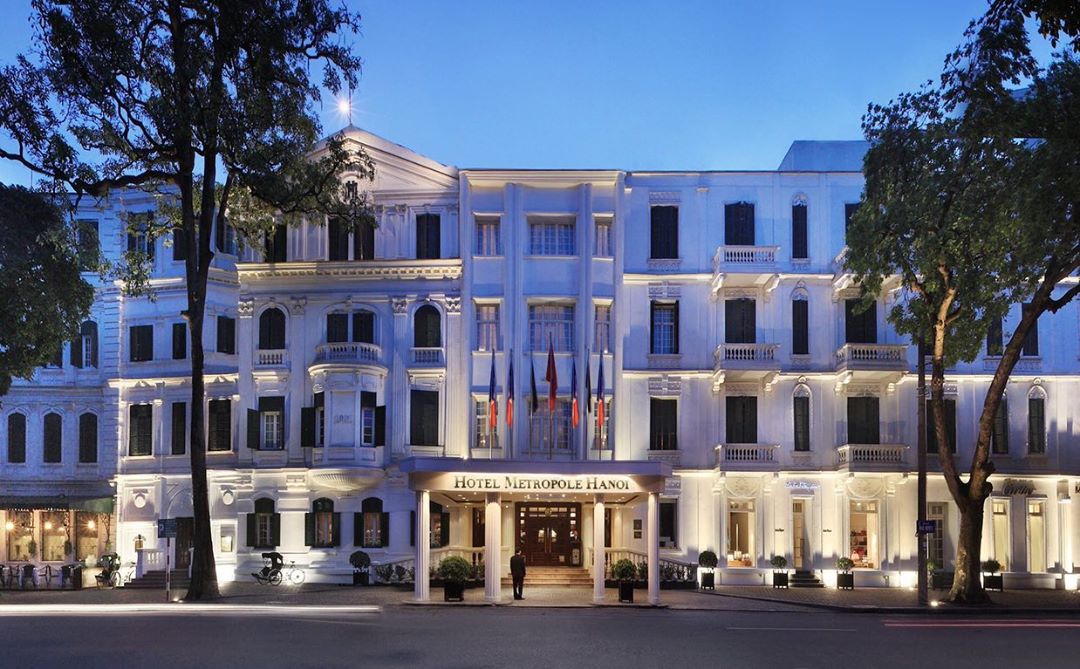 Hotel Sofitel Metropole Legend Hanoi - Photo: @traveldiaries550
Hotel Sofitel Metropole Legend Hanoi - Photo: @traveldiaries550
The Presidential Palace
The Presidential Palace, built between 1901 and 1906, initially served as the residence of the General Governor of French Indochina.
Embodying the essence of European design typical of the period, the palace features a symmetrical layout, complemented by a mango garden surrounding the premises. The building is painted in a vibrant yellow hue, with its grand green iron gate still securing the entrance.
Currently, it serves as the official residence and office of the President of the Socialist Republic of Vietnam.
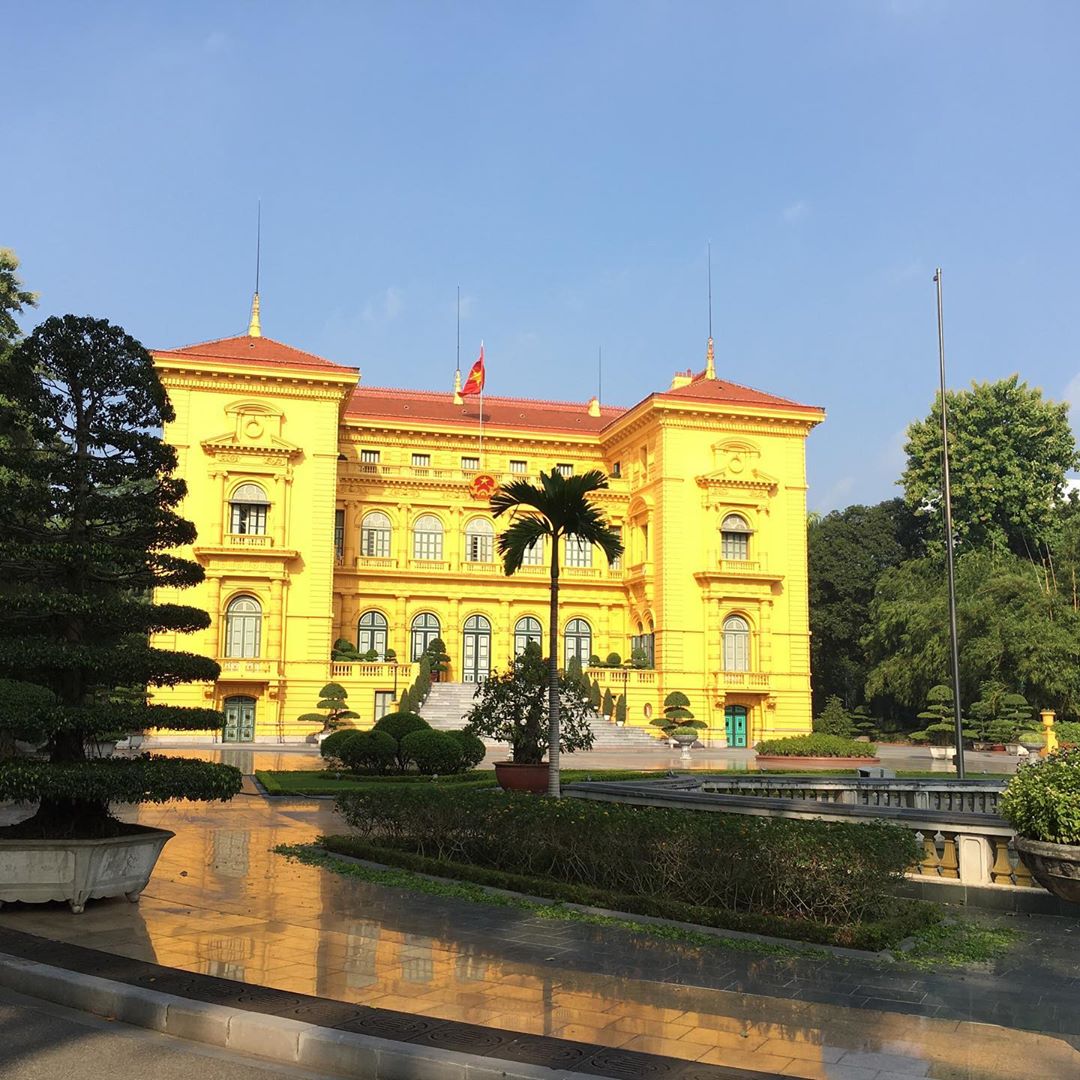 The Presidential Palace - Photo: @quangvinh52ndc
The Presidential Palace - Photo: @quangvinh52ndc
Dong Xuan Market
Constructed by the French company Poinsard Veyret in 1889, Dong Xuan Market is one of the largest markets in Hanoi and the most significant in the Old Quarter.
The market’s straightforward design spans 6,500 square meters and includes five domed blocks, each 52 meters in length and with a steel framework reaching 19 meters high. The front façade boasts stunning elements of French architecture, featuring five sculpted triangular arches reminiscent of a honeycomb pattern, along with a distinctive metal roof.
After the liberation of Hanoi, Dong Xuan Market maintained its relevance and has become a vital marketplace for locals, embodying a vital part of Hanoi's urban life.
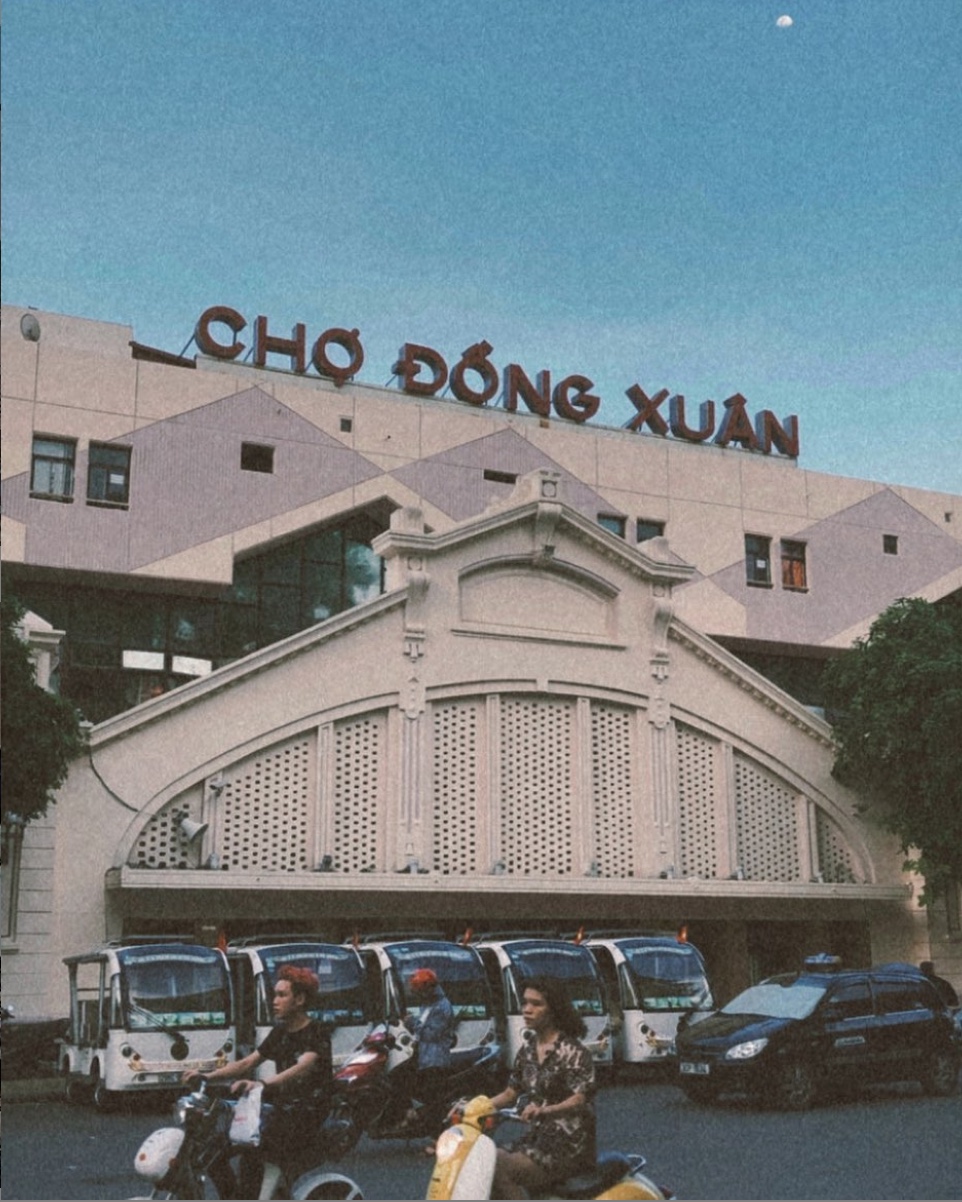 Dong Xuan Market - Photo: @ironnam
Dong Xuan Market - Photo: @ironnam
Saint Joseph Cathedral
Constructed in 1886, Saint Joseph Cathedral follows the Gothic architectural style akin to medieval Europe, popular during the 12th century and the Renaissance.
Resembling the Notre Dame Cathedral in Paris, the church features soaring domes and measures 64.5 meters in length, 20.5 meters in width, and boasts two towers rising 31.5 meters high, adorned with massive stone pillars. Atop the cathedral lies a significant stone cross, and it houses a collection of Western-crafted bells, including four smaller bells and one large bell that cost 20,000 francs at the time of its construction. Additionally, it possesses a giant clock linked to the five bells in the towers.
Saint Joseph Cathedral continues to hold several masses each day and attracts crowds on weekends and religious holidays.
The French architecture in Hanoi has become a cultural heritage representing historical significance while harmonizing with traditional architectural elements. It plays an essential role in shaping the picturesque image of Hanoi and creating an unforgettable impression on visitors to the millennium-old city known as the Ascending Dragon.
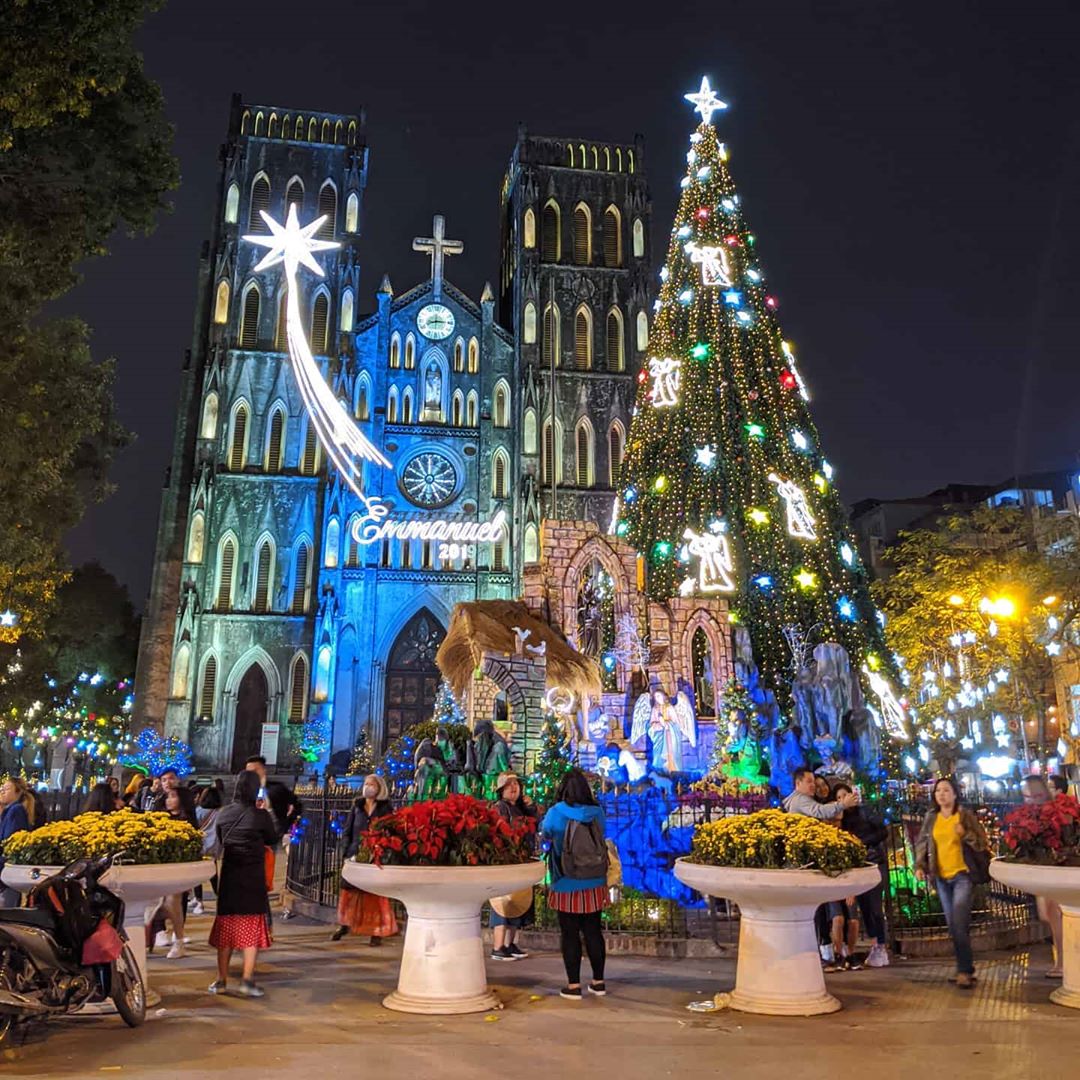 Saint Joseph Cathedral - Photo: @barok_bagsik
Saint Joseph Cathedral - Photo: @barok_bagsik

Best Things To Do In Moc Chau
Moc Chau Town is among the top-rated tourist destinations in northern Vietnam brimming with ultramodern and natural sightseeing attractions.

Vietnamese Snacks Among Best In The World
Vietnamese cuisine has long been known as among the most abundant and delicious cuisines in the world.

The Most Expensive "Banh Mi" In Ho Chi Minh City That Is Worth A Try
Long queues of Saigoneses, tourists, and shippers in front of the "banh mi" Huynh Hoa shop have long become a familiar scene every afternoon.








